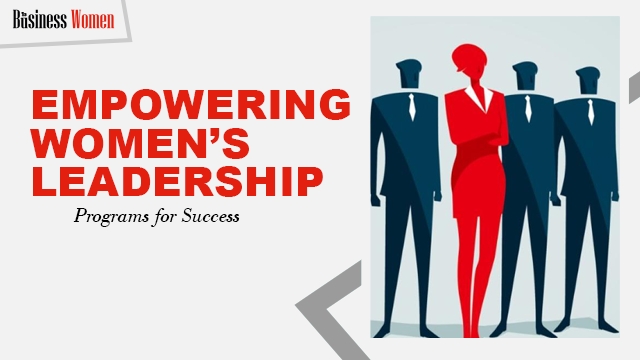Empowering Women’s Leadership: Programs for Success
In recent years, women’s leadership programs have gained significant traction as many organisations have recognised the importance of gender diversity and the need to empower women in leadership positions also. Women’s leadership programs are important in supporting and developing women leaders, breaking down barriers, and creating a more inclusive and equitable professional landscape.
Top 5 Programs for Success
Let us look at the main objectives of women’s leadership programs and the transformative impact these programs have had on the careers of women and the organisations they serve:
Creating a Supportive Network
By embracing women’s leadership programs, we can build a supportive network of aspiring women leaders from diverse backgrounds, industries and career stages, as well as providing them with a platform for networking, mentorship and collaboration.
Connections and relationships are primary objectives for women as they help gain access to a supportive community that understands their unique challenges, shares experiences and provides guidance. Thus, the network built through these programs becomes a valuable resource for professional development and support to women.
Developing Leadership Skills
The Women’s Leadership Program is designed to develop and enhance leadership skills among women. Through targeted training, workshops and coaching, these programs help address critical leadership competencies such as communication, strategic thinking, decision making and emotional intelligence.
Skill development develops confidence and competence among women and is essential for assuming leadership roles and navigating the complexities of today’s business environment. Strong leadership skills empower women to lead authentically and drive meaningful organisational change.
Overcoming Gender Bias and Barriers
Women’s leadership programs aim to address gender biases and barriers that hinder women’s advancement in the workplace. Women’s leadership programs educate and spread awareness about unconscious biases, gender stereotypes, and systemic barriers that limit women’s advancement.
That is why women must be provided with knowledge that can help them effectively challenge and overcome prejudices to create a more inclusive and equitable workplace for themselves and for future generations.
Nurturing Confidence and Empowerment
Confidence plays a vital role in the leadership journey of women. Thus, the Women’s Leadership Program provides a supportive environment that enhances self-confidence among women.
Women should be provided with skill-building, relationship advice, and public speaking and presentation opportunities to gain the self-assurance needed to pursue leadership roles and career advancement. However, empowering women with confidence helps them overcome self-doubt, speak up, and seize opportunities for growth and influence.
Fostering Strategic Career Development
However, the Women’s Leadership Program plays a crucial role for women at different stages of their professional journey. These programs help women identify and articulate their career goals, design personal development plans, and navigate career transitions.
Through mentorship, coaching and exposure to senior leaders, ambitious women can gain insight into various career paths, broaden their perspectives, and acquire the skills needed to navigate complex organisational, dynamic dynamics. By focusing on strategic career development, women can also take ownership of their professional development and create a path towards long-term success.
Conclusion
The main objective of women’s leadership programs is to empower women, promote skill development, break down barriers and create a more inclusive and equitable professional landscape.
Women’s leadership programs include building a supportive network, developing leadership skills, overcoming gender biases and obstacles, nurturing confidence and empowerment, fostering strategic career development, and driving organisational change.

